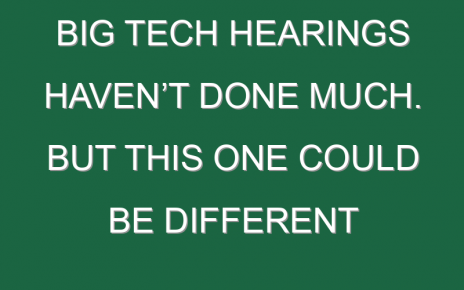It’s a truth universally acknowledged that as the festivities of the holiday season wind down and New Year’s resolutions set in, gyms and fitness centers are most crowded during the first quarter—if not the first month or even the first week—of the year.
But with another round of shutdowns occurring in many states as positive COVID-19 case numbers continue to spike to dire levels, this could present severe repercussions for businesses forced to close their doors again.
“January and February have always been an important time of the year for the fitness industry, on the heels of New Year’s when health and wellness resolutions are top of mind for consumers,” says Chris Rondeau, CEO of Planet Fitness. “Now more than ever, taking care of your physical and mental health is critical, particularly given chronic health conditions like obesity, diabetes, and heart disease, which worsen COVID outcomes. Exercise also helps to build healthy immune systems, and fitness centers are a critical piece of the health care delivery system to prevent chronic diseases.”
In recent years, the first two weeks of January account for, on average, 12% of new member activations for the entire year—the largest sales periods for gyms around the country, according to the International Health, Racquet, and Sportsclub Association (IHRSA). Within the first five months, nearly 70% of those on month-to-month memberships cancel, but as many infrequent gym members learn, it’s not so easy to cancel your membership once you have signed up.
“The New Year is a unique opportunity for gyms to attract new members; nearly 50% of those who make New Year’s resolutions include ‘exercising more’ as a top item,” says Mohammed Iqbal, CEO of SweatWorks, a software development agency that has produced fitness products with brands such as Nike, Cityrow, Equinox, Tough Mudder, and SoulCycle. “Because of those reasons, the first month is a critical time for the fitness industry looking to attract new members.”
In a typical year, most YMCA locations nationwide net 15% to 25% of their annual membership sales in the month of January. But branches across the country are bracing for a rough start to 2021.
“The current environment of the last 30 days is resulting in many more closures and will certainly result in the usage percentages dropping,” says Paul McEntire, executive vice president and chief operations officer for the YMCA. “However, the answer is we just don’t know how we will be affected in 2021. While more shutdowns are likely, there is hope with the distribution of vaccines that we could slowly start returning to normal.”
With all facilities closed for the greater part of two to three months last spring, limited operation of summer camps, hesitation by members to return to wellness facilities, and mandated shutdowns as COVID numbers rise again, McEntire says the YMCA has seen upwards of $2 billion in lost revenue since March and has been faced with devastating decisions regarding furloughs, layoffs, and permanent facility closures in certain areas.
“Charities like the Y need immediate relief from Congress if they are to continue to provide these vital support services and to help communities rebuild when this crisis is over,” he says.
Earlier this year, investment bank Harrison Co. estimated that the pandemic’s impact on lost sales will exceed upwards of $10 billion, which this late in the game could be a conservative forecast.
Based on data from major payment processing companies serving gyms and health clubs, 15% of health and fitness centers were permanently closed as of September, according to the IHRSA, and as many as one in four clubs may close by the end of the year.
As of the third quarter of 2020, gyms that were still open were reporting a nearly 38% drop in revenue. That is not including several gyms that have gone bankrupt already, including iconic brands such as 24 Hour Fitness, Town Sports (the parent company of New York Sports Club, among others), and Gold’s Gym.
“The industry is still tracking the complete impact of the pandemic and ensuing lockdown to brick-and-mortar facilities,” Iqbal says. “March and April were record months for gym membership cancellations, with nearly a third stating that they won’t be coming back even if their gym were to reopen at full capacity.”
Upon the temporary closure of its locations in mid-March, Planet Fitness, which runs more than 2,000 clubs nationwide, proactively froze all members’ accounts to ensure they were not billed for any days their club was closed.
“As a result of COVID-19, our membership levels have been under some pressure, primarily, we believe, from pent-up cancellations in reopened clubs following the resumption of billing,” Rondeau says. “However, we saw improved trends in gross new-member joins and increased usage rates as a result of kick-starting our national marketing efforts in September, and then again in October and November. We believe fitness is an essential component of our physical and mental well-being, and this momentum shows that demand is there and people do want to safely return to the gym.”
Still, the outlook for gyms is not looking great for the start of the new year. Iqbal suggests there are two key drivers that gyms are up against. First, states are rolling back their openings and closing down establishments, including gyms and restaurants. The second is that consumers have evolved and adopted other sources of fitness including connected and digital offerings.
“Gyms will not see a growth in memberships until consumers feel that they are safe, which will not happen until vaccines are widely available,” Iqbal predicts.
“It is clear that, unfortunately, not every brand in the industry will be able to weather this storm,” Rondeau says. “We are hearing from many franchisees that locally owned gyms in their markets are not reopening, on top of the bankruptcies and reported store closures at a number of national chains. We believe that health and wellness is more important now than ever before, and this increased focus on physical activity will continue to grow and play an important role in people’s everyday lives.”
Upon reopening later in 2020, Rondeau says Planet Fitness developed what he described as a “robust COVID-19 operations playbook,” outlining new protocols such as cleanliness and sanitization policies, physical distancing measures in its larger and more spacious clubs (measuring approximately 20,000 square feet), mask requirements systemwide, and touchless check-in via mobile app. The enhanced mobile app features a series of COVID-19 wellness questions upon check-in, and a crowd meter that allows members to check club capacity levels before coming into the gym.
“Certainly, the operating environment for the short term will remain volatile given the virus,” Rondeau says. “With respect to operating our locations now and into 2021, we firmly believe we can continue to operate safely and responsibly in this environment as we have strict COVID guidelines in place.”
New year, new normal
Most gyms still in business have attempted to pivot to digital offerings. Planet Fitness, for example, offers more than 500 free workouts via app for both members and nonmembers, developed in partnership with iFit to provide streaming workouts and additional content. But many are still playing catch-up to established home-based exercise brands, such as Peloton, Cityrow, and MYXfitness.
“Consumers have evolved during the lockdown in everything from how they work to how they work out,” Iqbal notes. “While some COVID trends including retail shopping, Broadway, restaurants, and bars will bounce back to pre-COVID rates once a vaccine is widely available, other trends, such as work from home and digital fitness are here to stay: 2020 has seen the acceleration of connected and digital fitness across the board.”
SweatWorks expects that trend to continue into 2021 with significant improvement in hardware, artificial intelligence, and personalization.
“Peloton has done for fitness what Netflix has done for streaming,” Iqbal says. “Digital fitness will continue to be an increasing source of experience and consumption to a broader audience in 2021. You no longer need to live on the coasts and in a major city to have access to the best coaches, facilities, and programs—you can get immersed in your wellness right where you are.”
Data from IHRSA’s upcoming 2020 Health Club Consumer Report shows that 20% of health club members now use a premium online fitness service. “Offering virtual fitness training and exercise classes will continue,” says Melissa Rodriguez, a senior research manager at IHRSA. “Considering the boost that home fitness equipment sales met over the pandemic, clubs stand to gain from this development. It shows the importance of physical activity and overall well-being resonates with consumers.”
And with a massive COVID-19 vaccine rollout getting underway in the United States and medical experts predicting millions of Americans should be vaccinated by the summer, the fitness industry should see a much wider reopening during the second half of the year. The real test, at that point, will be convincing patrons it’s safe to come back to the gym.
Members returning to YMCAs for wellness varies significantly based on local restrictions, guidelines, and personal attitudes, according to the nonprofit’s COO. So far, just a fifth of the YMCA’s membership base has returned in urban areas with tighter shutdown restrictions, compared with 40% to 60% in rural areas and Southern states.
“We know there is a base that will come back as soon as it seems safe,” McEntire says. “There is another group that will come back when they are absolutely certain it is safe. There is a third group that presently seems to be 15% to 25% that is unlikely to ever come back to a facility to meet their fitness needs.”
McEntire suggests there are a number of important elements that fitness centers need to get right to ensure patrons come back, starting with having a clean, safe, and secure facility as a base-level requirement.
“We know some about what will influence people to return to YMCAs, but people’s perspectives and attitudes continue to evolve, and will continue to evolve, as the situation and circumstances change over time,” he says. “Attitudes on procedures involving things such as distancing, masks, and size of group varies greatly. What is seen as too strict to some can be seen as too lax to others.”
And, even with virtual fitness classes, at-home workouts can never fully replicate the feeling of being around friends and teammates, and many people cooped up at home or working out alone outdoors could be itching—if not desperate—for a more social experience next year. “We know there is a significant group of people for whom success with their fitness goals has a critical social component, and they want to be with others,” McEntire says.
Feedback collected by the IHRSA from gymgoers shows that they missed their local gyms and fitness centers while they were closed. A recent study conducted by Kelton Global found that the only thing that health club members missed more than their health clubs while they were closed was visiting with family and loved ones. The study also pointed out the importance of the variety of equipment, facilities, services, and programs clubs offer that are challenging to duplicate at home.
“Health clubs provide the accountability and sense of community a lot of exercisers need to stick with an exercise program and make healthier choices to improve overall well-being,” Rodriguez says. “Once health clubs and gyms can operate with less limiting restrictions, and when COVID-19 gets under control, we expect consumers to want to engage in programs at their health and fitness centers. We believe consumers will especially want social and community-oriented offerings—small group/team training and group exercise.”
More must-read lifestyle and entertainment coverage from Fortune:
- The 10 best business books of 2020
- Disney’s profits on streaming services are expected to plunge—and investors love it
- “The Mozart of fungi”: For ages, truffle hunting has been one of the most challenging pursuits on earth. Then the pandemic hit
- Commentary: 5 ways the pandemic will transform the live theater industry
- Lessons from HBO Max’s streaming surprise




